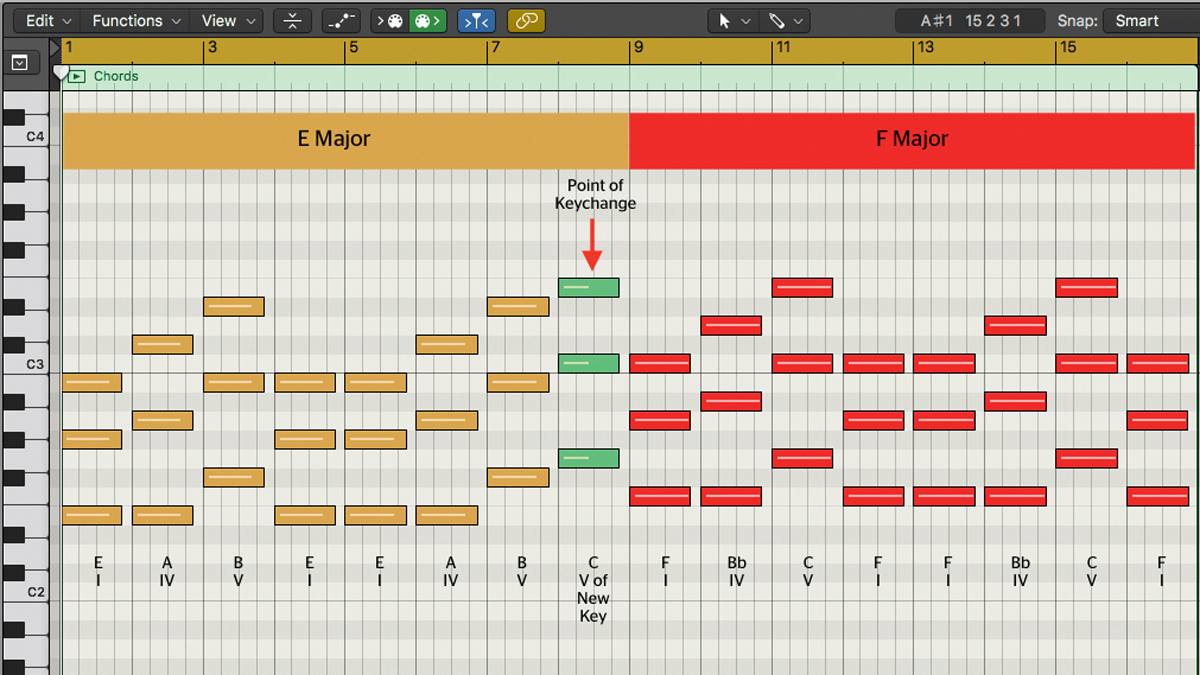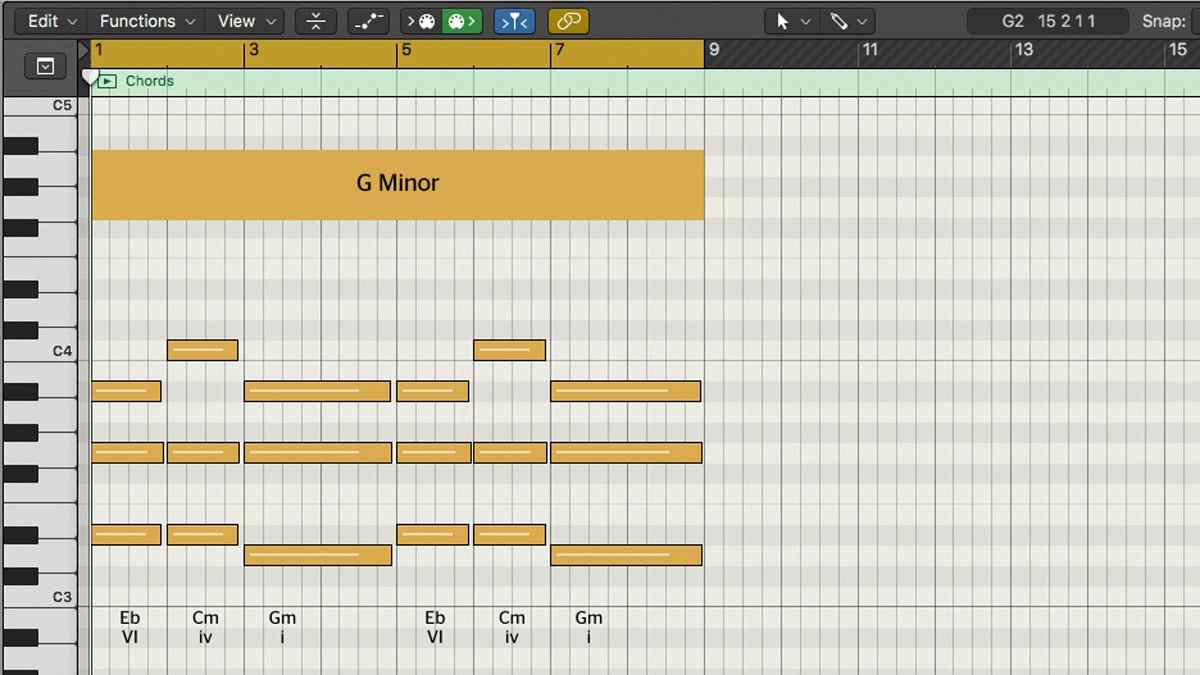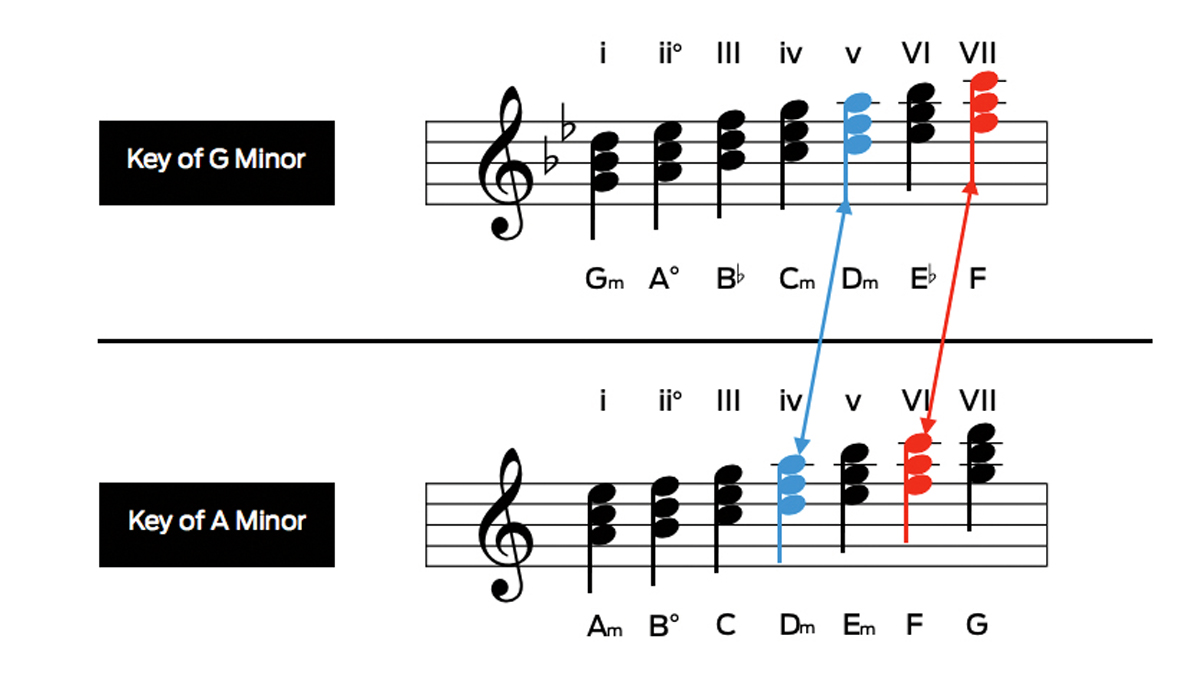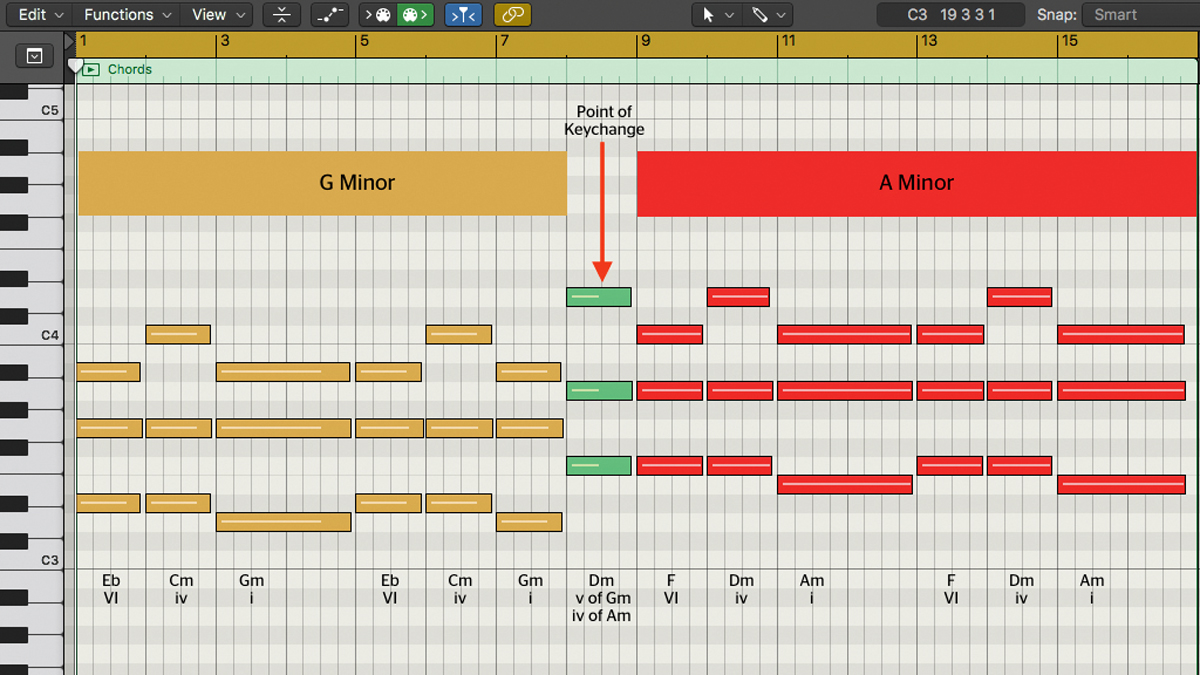Master modulation: How to use key changes in your songs
Music theory can help you to shift successfully from one key to another

Key changes - or ‘modulations’, to give them their proper, music theory-professor name - may have become a bit of a pop cliché (picture Westlife stepping off their stools), but knowing how to craft a smooth key change is a useful songwriting skill.
Here, we’re going to show you three ways to change key successfully.
Chromatic modulation
There are various ways to ‘modulate’ to a different key, but one of the easiest is via chromatic modulation - taking a chord in one key and shifting it up one semitone to a chord that’s in the new key.
In this example, a I - IV - V progression in E major modulates to the key of F major by way of the V chord - B major - shifting chromatically up by one semitone to C major, which becomes the V chord in the new key of F major.
Parallel modulation

Parallel modulations shift between major and minor keys that share the same root note - C major and C minor, for example. This is often done via the dominant V chord common to both keys, which in this case would be G major.
But wait! Isn’t the V chord in a minor key a minor chord? Well, yes, but in these cases we cheat by harmonising a different minor scale made just for this purpose - the Harmonic minor scale - which gives us a major V chord in a minor key.
Pivot chord (aka diatonic) modulation
Another way to change key, using a pivot chord means finding a diatonic chord common to the current and new key, then using that chord to bridge the gap.
Want all the hottest music and gear news, reviews, deals, features and more, direct to your inbox? Sign up here.

Step 1: Here we have a chord progression of Eb - Cm - Gm. This is represented in the key of G minor as a VI - iv - i. Let’s say we want to shift to the A minor key after eight bars. Our first job is to figure out which chords are diatonic to both keys...

Step 2: In minor keys, the i, iv and v chords are minor, and III, VI and VII chords are major. Here are the diatonic sets for Gm and Am keys. Note that the common chords are Dm and F - v and VII chords of Gm and iv and VI chords of Am respectively.

Step 3: Let’s bring about the change of key by inserting a D minor chord at the end of our G minor section, and continuing the same progression in the new key of Am. The same VI - iv - i progression in this key now produces the chords F - Dm - Am.
Computer Music magazine is the world’s best selling publication dedicated solely to making great music with your Mac or PC computer. Each issue it brings its lucky readers the best in cutting-edge tutorials, need-to-know, expert software reviews and even all the tools you actually need to make great music today, courtesy of our legendary CM Plugin Suite.
